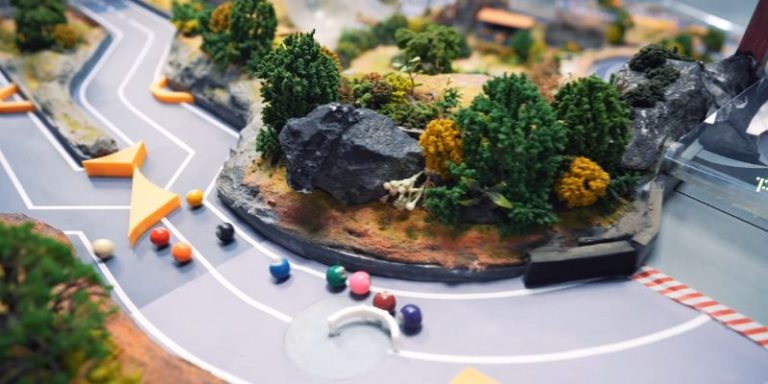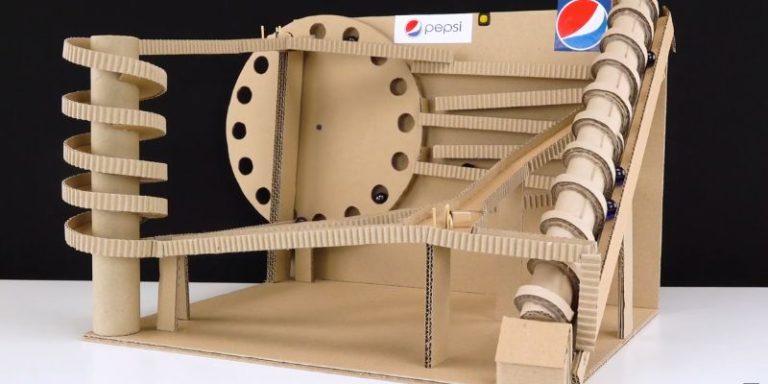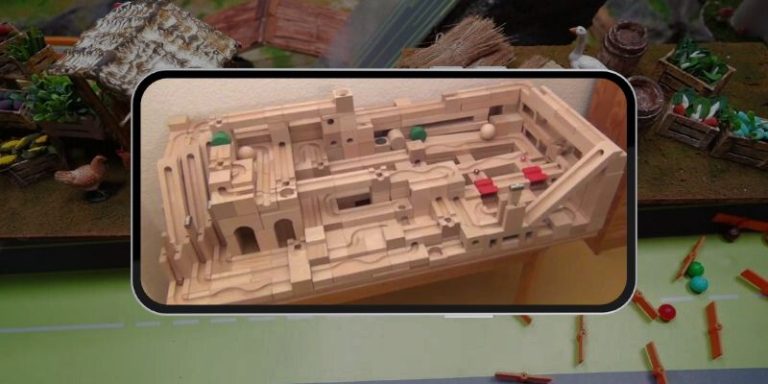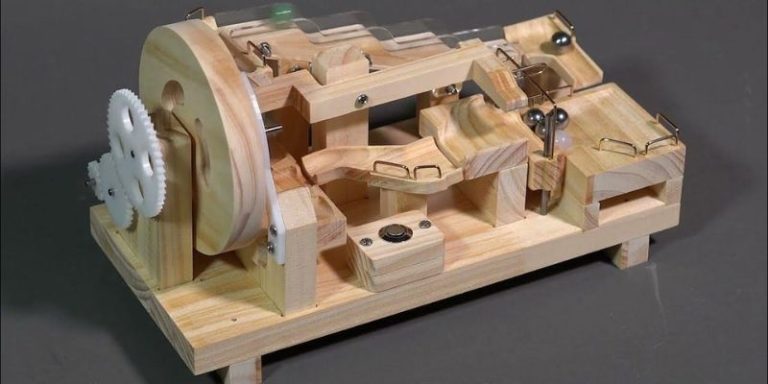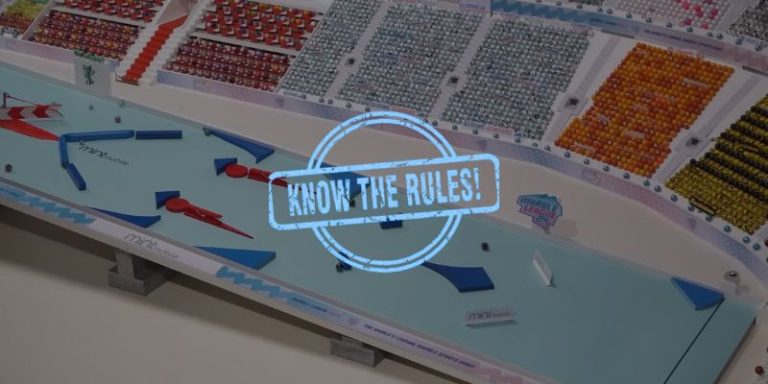How a Marble Track Works: Everything You Need to Know
A marble track employs gravity, velocity, and obstacles to move marbles through thrilling courses. As marbles roll down sloped surfaces, their speed and direction are influenced by track design, bends, and obstacles such as jumps or rotating gates.
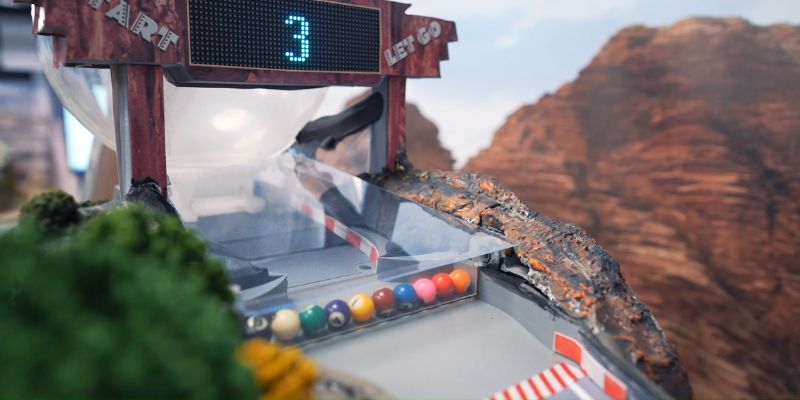
Whether a homemade track or a professional track, each track delivers unpredictable, high-speed excitement. From slick plastic tracks to sand-based courses, various designs influence how marbles race, making each competition unique and exciting.
The core mechanics of a marble track
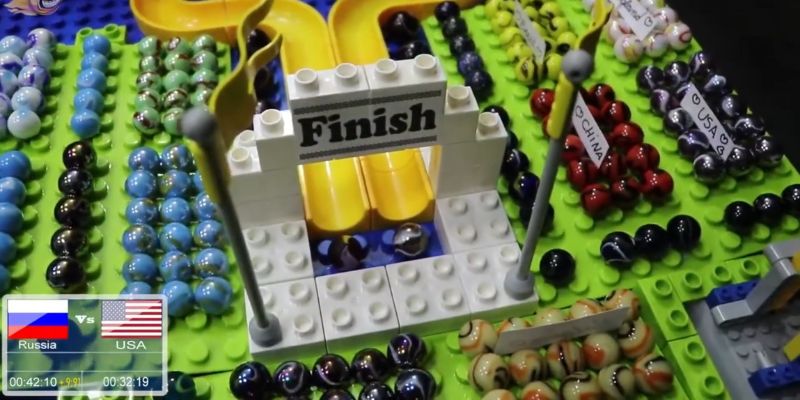
The Start – Where the Race Begins
Every great race requires a fair start. Marble tracks use motorized gates, ramps, or simple hand launches to release marbles simultaneously. Some tracks even feature spring-loaded launchers for an added burst of speed.
Gravity – The Ultimate Driving Force
No engines. There’s no push. It’s just gravity doing all the work. A marble moves because the track dips downward and pulls it forward. The higher the slope, the faster the marble moves. But is it too steep? It may lose control.
Track Surface & Friction – The Secret to Speed
Smooth plastic causes pebbles to fly. Sand slows them down. Wood? A superb mix between grip and glide. Every surface alters how marbles roll, introducing strategy and unpredictability into each race.
Key features that make a marble track work
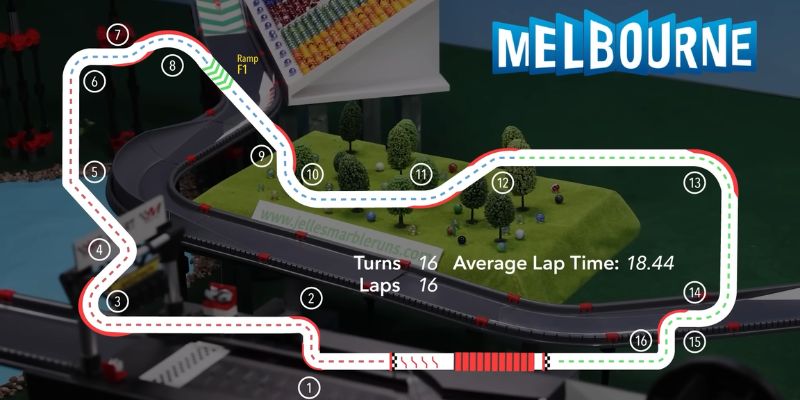
Ramps & Slopes
It all begins with a decent drop. Ramps and hills set the tempo, giving marbles their first taste of speed. The steeper the hill, the quicker they go—but too fast, and they risk losing control. It all comes down to striking the right balance.
Curves & Chicanes
There is no straight path to triumph here. Curves and chicanes demand marbles to weave through tight curves, slowing them down and requiring strategy. A well-placed curve can dramatically alter the race order in an instant.
Obstacles & Hazards
Every great track requires a little madness. Spinning gates, bumpers, leaps, and funnels make things unpredictable. Some obstacles slow marbles down, while others send them flying. Each race is unique because no two marbles follow the same course twice.
Lifts & Multi-Level Sections – The Game Changers
Want to run longer races? Lifts bring marbles back up for another lap. Some tracks include conveyor belts, while others feature rotating elevators or even mechanical arms. Multi-level tracks increase complexity by forcing marbles to alter their speed and control at various heights.
The science behind marble racing
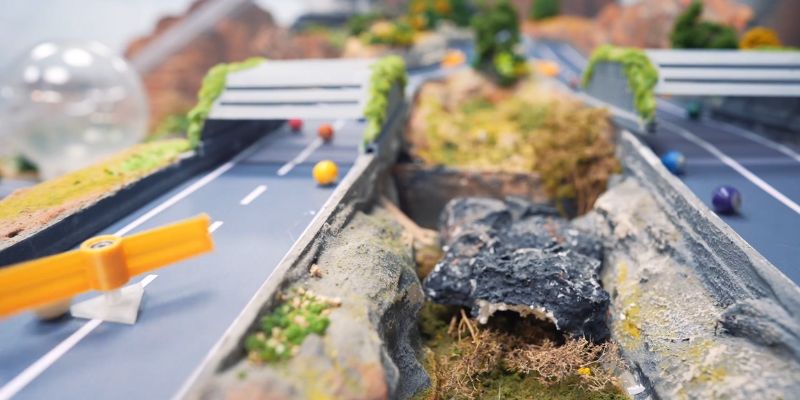
Momentum & Acceleration
There are no engines or batteries, just pure gravity doing its thing. The steeper the slope, the faster the marble descends. More height means more speed. But is it too steep? That stone may spin out, bounce, or crash into mayhem.
Friction & Resistance
Have you ever wondered why marbles fly on plastic and creep on sand? Friction is the reason. A smooth track allows marbles to glide freely, whereas uneven surfaces reduce their speed and slow them down. Every track material affects how the race plays out.
Collisions & Randomness
Do you think a race is predictable? Think again. Marbles collide, ricochet, and spin-off in unexpected directions. Tight curves, funnels, and unforeseen obstacles transform the race into controlled pandemonium. Sometimes the marble that endures the crazy wins rather than the one that is the fastest
Types of marble tracks and their differences
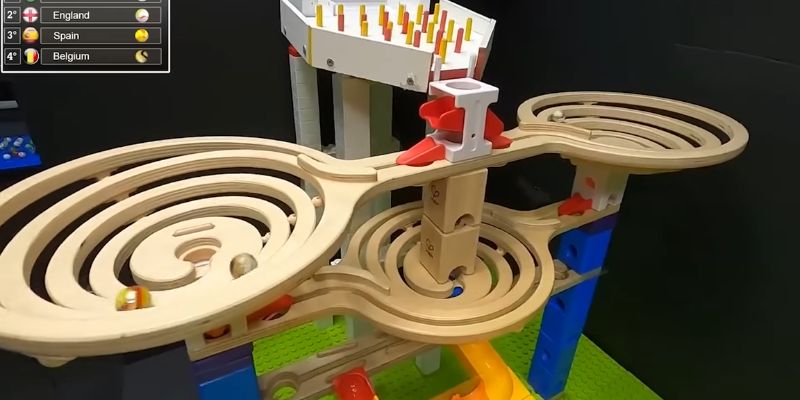
Classic Modular Tracks
Many racers prefer plastic tracks or wooden sets with snap-together pieces. You can customize, alter, and rearrange the piece however you want. Want more twists? Add them. Need a larger drop? Raise the commencement point. There are unlimited options and fun.
Sand-Based Tracks
No regular lanes, no smooth surfaces—just marbles moving over rough, unexpected terrain. Sand tracks cause marbles to shift, slow down, and steer in unexpected directions, making each race unique. One powerful gust of wind? A completely new course is born.
Obstacle-Filled Courses
Funnels, leaps, spinners, and moving platforms—these tracks test not only speed but also survival. Racers must evade, time their movements, and hope luck is on their side. Ideal for fast-paced, nail-biting races.
High-Speed Tracks
These are the autobahns of marble racing—long straightaways with little friction and just enough turns to keep things interesting. Speed demons rule here, and only the fastest marbles can claim the crown.
The future of marble tracks
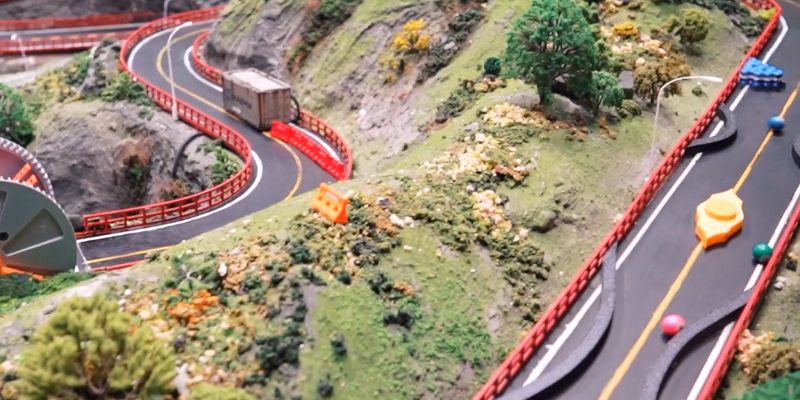
Marble racing is evolving, as are the tracks. Bigger, quicker, and more unpredictable—the future promises some big advances.
AI-Designed Tracks
Consider a track that responds to the race in real-time. AI-generated courses might modify barriers, shift angles, or even include random events to keep each race interesting and thrilling.
High-Tech Materials
Expect to see tracks with low-friction surfaces that promote speed, as well as tracks that use smart sensors to precisely measure racing data. Marble racing requires next-level precision.
Interactive Fan Experiences
Marble Magic and other leagues are already stretching the boundaries. Live fan voting, interactive betting, and virtual track builders may enable fans to influence races, design courses, and engage in real-time challenges.
The future is more than just racing; it’s about making each track a unique adventure.
FAQ about marble track works
What do people on Reddit say about how marble tracks work?
Reddit users often discuss DIY tips, physics of motion, and how different materials affect speed.
Is there a diagram that explains how a marble track works?
Yes, diagrams usually show elevation points, slopes, turns, and where obstacles are placed.
What materials are best for a classroom marble track?
Cardboard, paper rolls, foam board, and tape—cheap and easy to work with.
